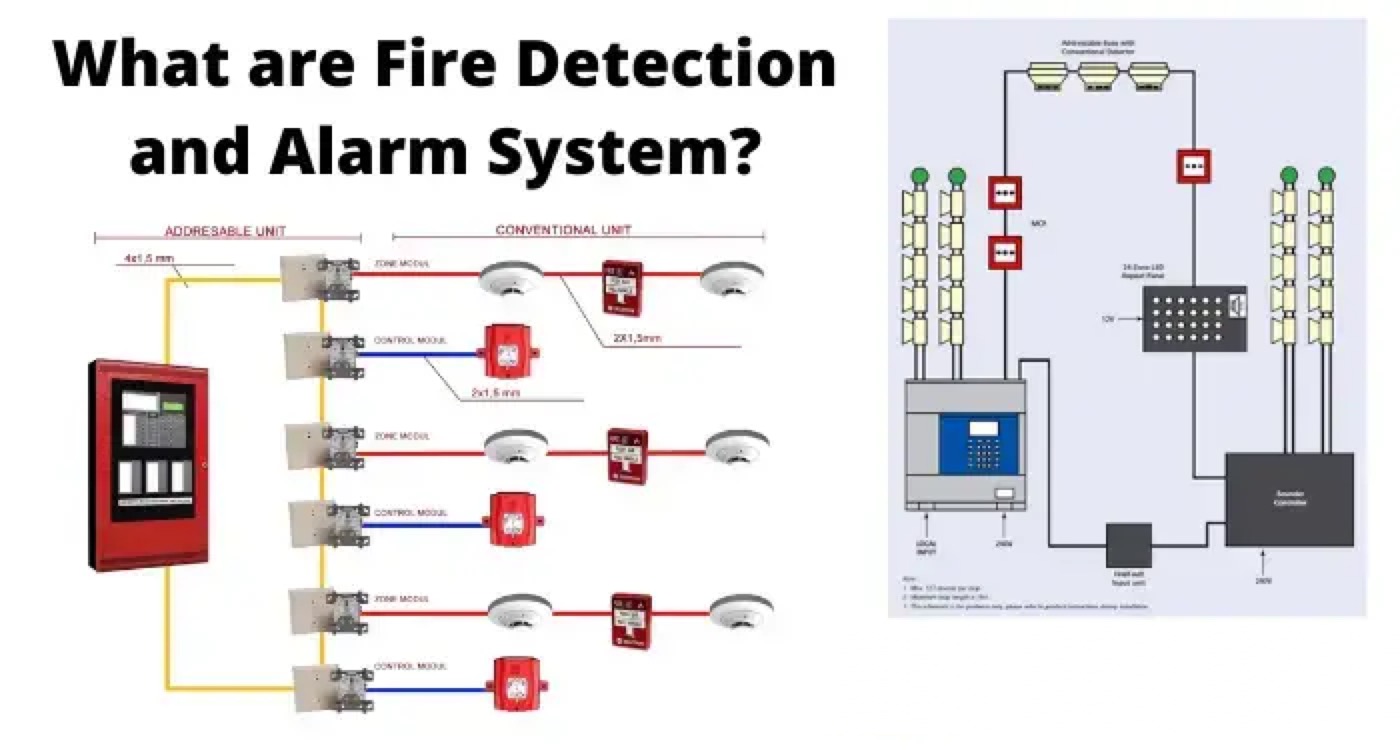Fire Detection and Alarm System

Introduction of Fire Detection and Alarm System
Fire detectors are designed to detect one or more of the three characteristics of fire-smoke, heat and flame. Besides it every fire detection system must include manual call points (break glass), so that in the event of fire can be of immediate help.
During a fire importance of activation of the occupants through alarm or bell is of at most vital and this can performed through alarm system.
Fire alarm system shall be designed to provide round the clock security against fire in the complete power plant area.
Microprocessor based addressable analogue type fire alarm and detection system to be used for various building/areas to detect and provide alarm signal in the main fire alarm panel to be located in the central control room. Fire alarm will be repeated in a repeater alarm panel in the fire station.
Main fire alarm panel annunciation shall be located in the control building. A repeater panel shall be provided in the fire station. Total no of annunciation shall be based on the specific plant requirement.
One (1) siren of 10 Km range is envisaged to provide warning in the event of fire.
In addition to it, PLC panel shall be provided at fire pump house and foam pump house.
Why Fire Detection and Alarm System Required
Fire detection and protection system is required for the following reasons:
To detect fire in the area during the initial stage.
To alert occupants, so that they escape the building safely.
Summon trained personnel to take charge of controlling the fire as quickly as possible.
To initiate automatic fire control and suppression system.
To support and supervise the fire control and suppression system.
Type of Fire Detectors
Smoke Detector

Fire Detector

Heat Detector

Area to be Covered under Fire Detection and Protection System
Sl. No. |
Fire Detection System |
Area to be Covered |
1 |
Smoke Detection System |
|
2 |
Linear heat sensing cable detection system |
|
3 |
Quartzoid bulb heat detection system |
|
4 |
Infra-red Detectors |
|
Design Philosophy of Fire Detection and Alarm System
The PLC based control panel at pump houses shall indicate the status of each pump, system pressure, operation of hydrant or spray system, failure of starting of pumps, healthiness and failure of batteries/chargers, main supply, low level/very low level of water in the water supply system, status of compressors, selection station of batteries and chargers of panels and diesel engines etc. Alarms from these panels shall also be available at fire station in a repeater panel and at main fire panel alarm in control room.
The PLC based addressable type panels at central Control rooms shall receive signal from sensor from various areas/equipments of the respective units.
The Microprocessor based addressable panel shall evaluate the signals received from detectors, transmit the fire or trouble alarms (audio-visual) to prearranged points, supervise and monitor the complete fire detection and extinguishing circuits, initiate control functions like closure of fire doors, shutdown of draft fans, air conditioning and ventilation plant/equipment, closure of fire dampers in A/C and ventilation system etc. Opening smoke extraction vents, switching on smoke extraction equipment emergency lighting, tripping of transformer lockout relays etc.
All the circuits from the detectors to the panels and the circuits from the panels to the actuating devices (such as solenoid valves, deluge valves, push buttons etc) shall be in closed loop type and in close watch for open-and-short-circuiting.
Facilities shall be provided on the main fire alarm panel for sensitivity adjustment, isolation of detectors etc from the panel.
Panel of fire detection, alarm monitoring and annunciation system shall operate on DC-supply, along with associated rectifier bank. Further each panel shall have the provision for batteries for charging.
Each set of battery shall have the capacity for a period of 12 hours from the instant of charger/AC failure.
Exit signs shall be painted o 18 gauge cold rolled sheet steel. This sheet should be suitable for fixing on walls or hanging from ceiling. Fire Exit/No Fire Exit shall be displayed on both sides of the Exit signs.
Statement: Respect the original, good articles worth sharing, if there is infringement please contact delete.
Electrical4U is dedicated to the teaching and sharing of all things related to electrical and electronics engineering.













